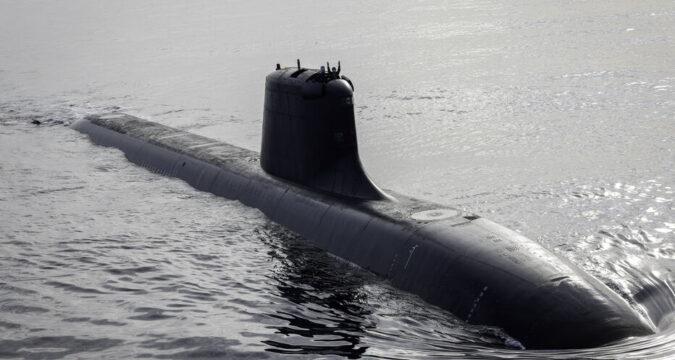Le Suffren vu d’un hélicoptère. ©Arnaud Dumontier pour Le Parisien Week-End
A French attack submarine, the FS Tourville, appeared Monday in the port of Halifax in Nova Scotia, a Canadian province. Photos of the vessel were posted on social media , fueling speculation amid the geopolitical turmoil. Some see it as evidence of a show of force by the European Union in the face of Donald Trump’s multiple provocations.
The submarine is owned by French Naval Group, the European leader in the sector. It made its first Atlantic crossing on Monday as a test, as Canada prepares to renew its submarine fleet.
Last February, the French naval group responded to a request for information from Ottawa, which aims to put 6 to 12 new submarines into service from 2035. Encouraged by Emmanuel Macron, the French manufacturer has therefore launched an attempt to secure this colossal market, with a contract estimated at 40 billion euros, according to La Presse de la Manche.
“France can bring unique know-how”
After a competition that promises to be fierce, the Royal Canadian Navy will select its supplier by 2028. In the meantime, it’s time for testing. The Tourville, a submarine built at the group’s Cherbourg site (Manche), docked in Halifax on March 10, watched by surprised Canadians. There, the submarine will still conduct “experiments (…) in the far north of Canada” and test “navigation in ice,” according to the French Embassy in Canada.
“At a time when Canada is announcing its intention to relaunch its submarine capability, France can undeniably contribute unique expertise,” Bruno Heluin, defense attaché at the French Embassy in Ottawa, said on Tuesday . To respond to the call for tenders, the French manufacturer is offering one of its “premium” models, the conventional Barracuda . This silent vessel, equipped with powerful and versatile weapons, can be deployed in all oceans and for long periods. It can also carry out intelligence missions.
Capabilities likely to convince the Royal Canadian Navy, which has demanding specifications. And for good reason, it has the distinction of defending the world’s longest coastline, bordered by three oceans: the Pacific, Atlantic, and Arctic.
A previous contract in the Netherlands
For its fleet, Ottawa wants to go beyond simply replacing the ships it acquired from the United Kingdom in the late 1990s, Le Monde notes . Among its criteria, Canada is seeking a certain stealth as well as the ability to navigate under the Arctic ice pack – which requires considerable autonomy.
The competition is open to European and Asian manufacturers “likely to meet our needs,” Canadian Defense Minister Bill Blair announced in October. For its part, Naval Group is entering the race, encouraged by a previous success in the Netherlands. In October, the manufacturer concluded the sale of four of its Barracudas in Amsterdam for nearly €5 billion.
Sources
Main: https://www.leparisien.fr/international/pourquoi-un-sous-marin-nucleaire-dattaque-barracuda-a-t-il-fait-surface-au-canada-12-03-2025-JOWOZFGPMBCDHO2WBRDFIVGCM4.php
Other:
https://www.lemonde.fr/economie/article/2024/10/06/les-crises-geopolitiques-relancent-le-marche-mondial-des-sous-marins_6345131_3234.html
https://actu.fr/normandie/cherbourg-en-cotentin_50129/un-sous-marin-nucleaire-barracuda-traverse-latlantique-pour-la-premiere-fois-et-fait-escale-en-mode-vrp_62357584.html
https://www.leparisien.fr/video/video-un-sous-marin-francais-teste-sa-torpille-lourde-f21-sur-un-ancien-patrouilleur-18-12-2024-VGLJNKMYVNC7PBJQ3SKLYTC3JY.php
